Code of Practice June Consultation
Illustration by Emily Johnson.
Illustration by Emily Johnson.
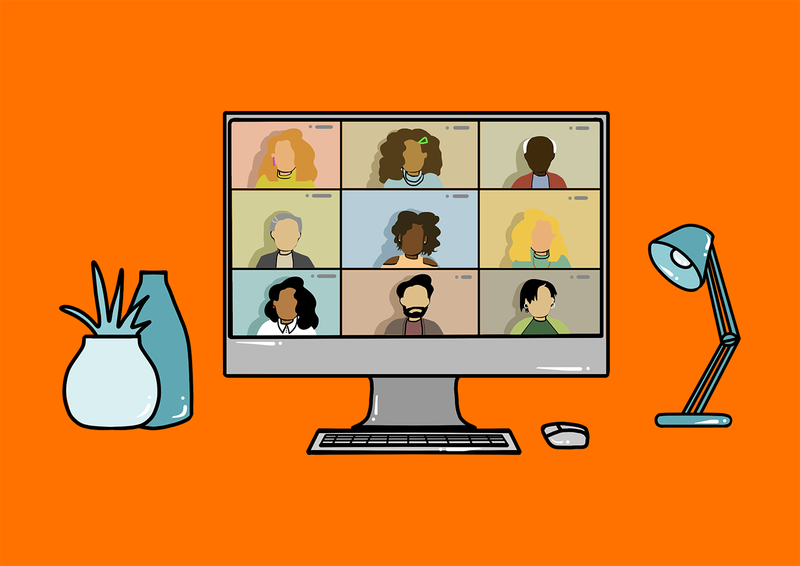
To kick-start consultation for our major revision of the Code of Practice, NAVA and research partners from RMIT School of Art hosted a week of seven one-hour online conversations from 22 - 25 June 2020. Each conversation, facilitated by Penelope Benton and Georgia Mokak, focused on different areas of the Code:
Hundreds of Artist and Organisational NAVA Members, colleagues and stakeholders joined us to contribute their experience and insight to these discussions. Guest presenters opened the sessions with presentations about their projects, experiences, and ways of working. Offered as a starting point, the consultation participants were then invited to deliberate over broad, big-picture questions in online breakout rooms.
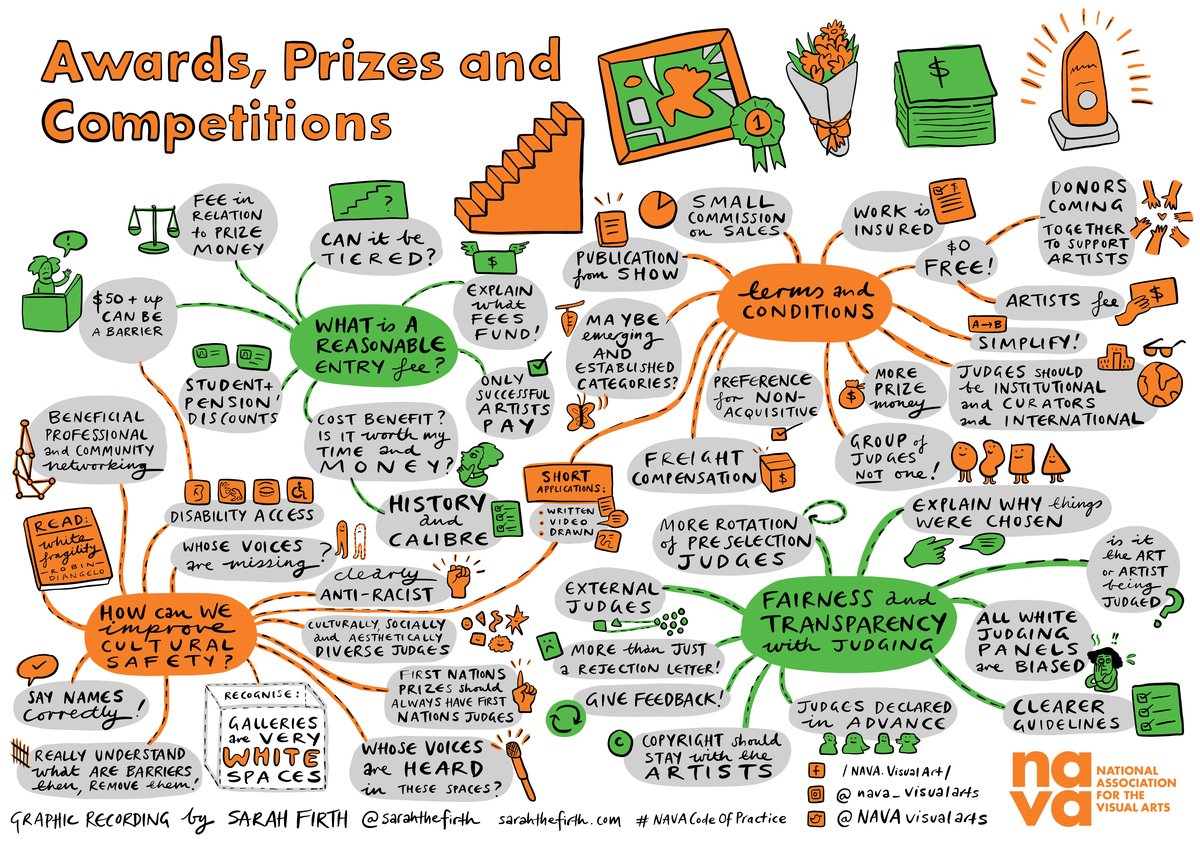
Awards, Prizes and Competitions. Graphic by © Sarah Firth.
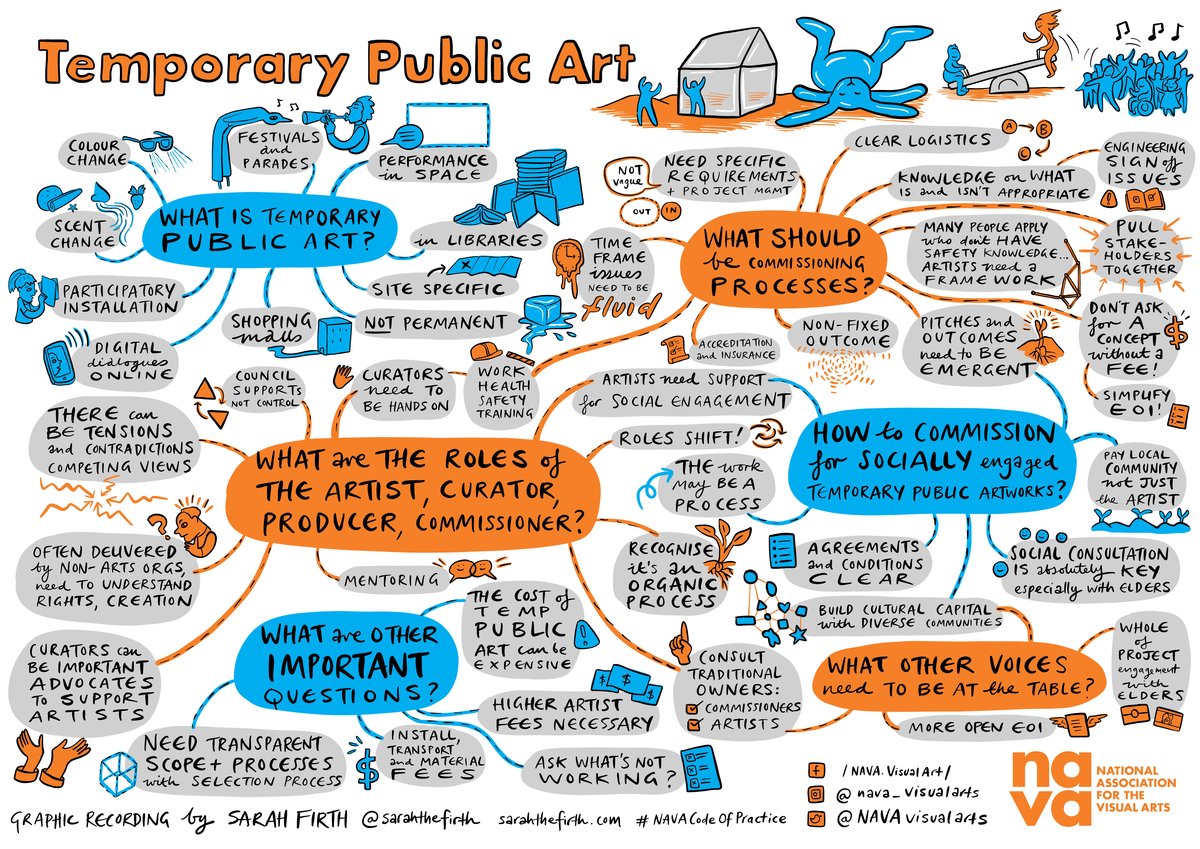
Temporary Public Art. Graphic by © Sarah Firth.
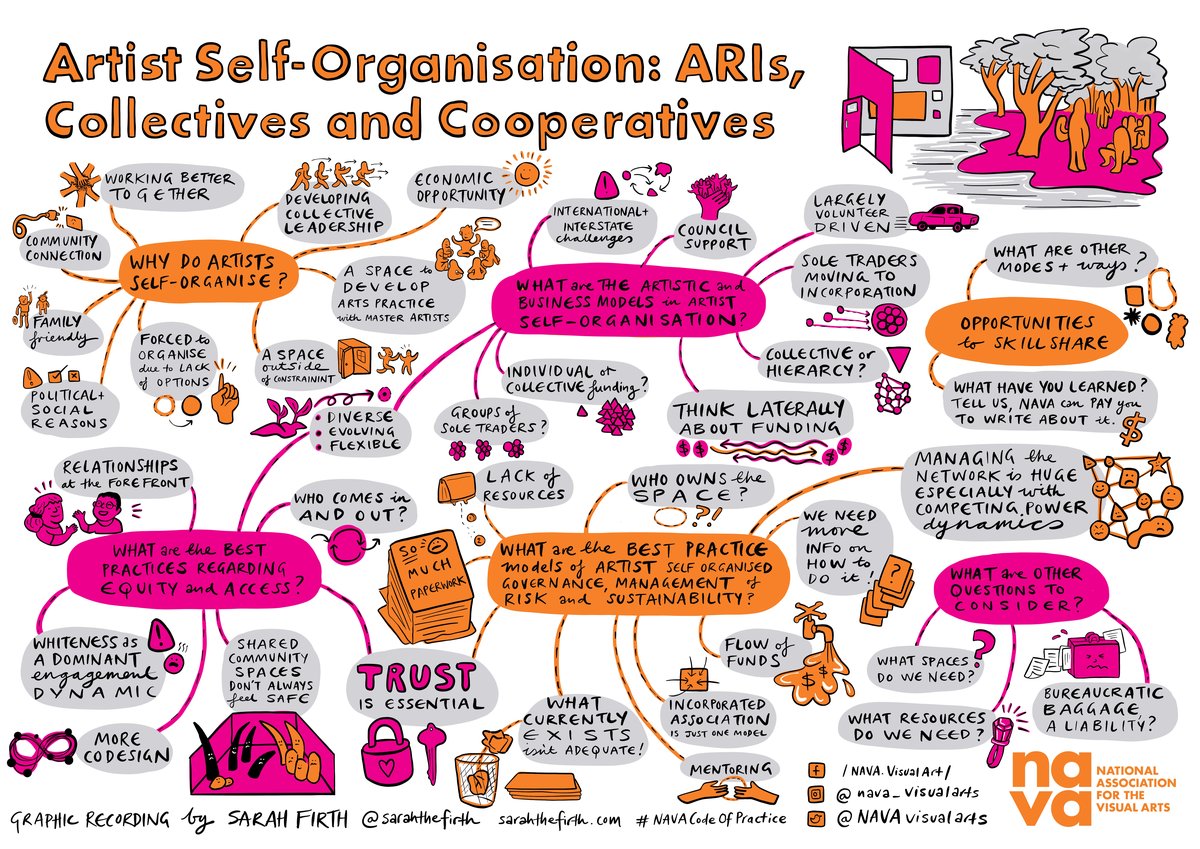
Artist Self-Organisation: ARIs, collectives and cooperatives. Graphic by © Sarah Firth.
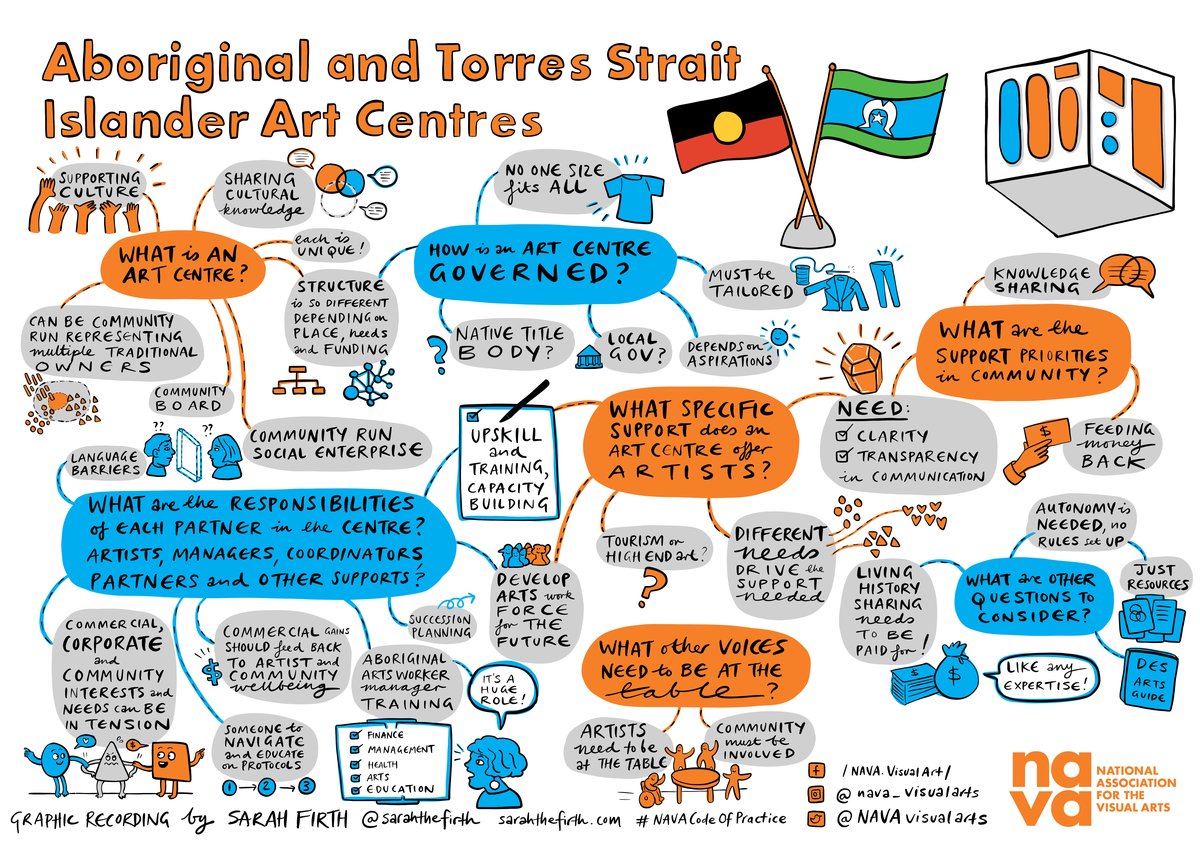
Aboriginal and Torres Strait Islander Art Centres. Graphic by © Sarah Firth.
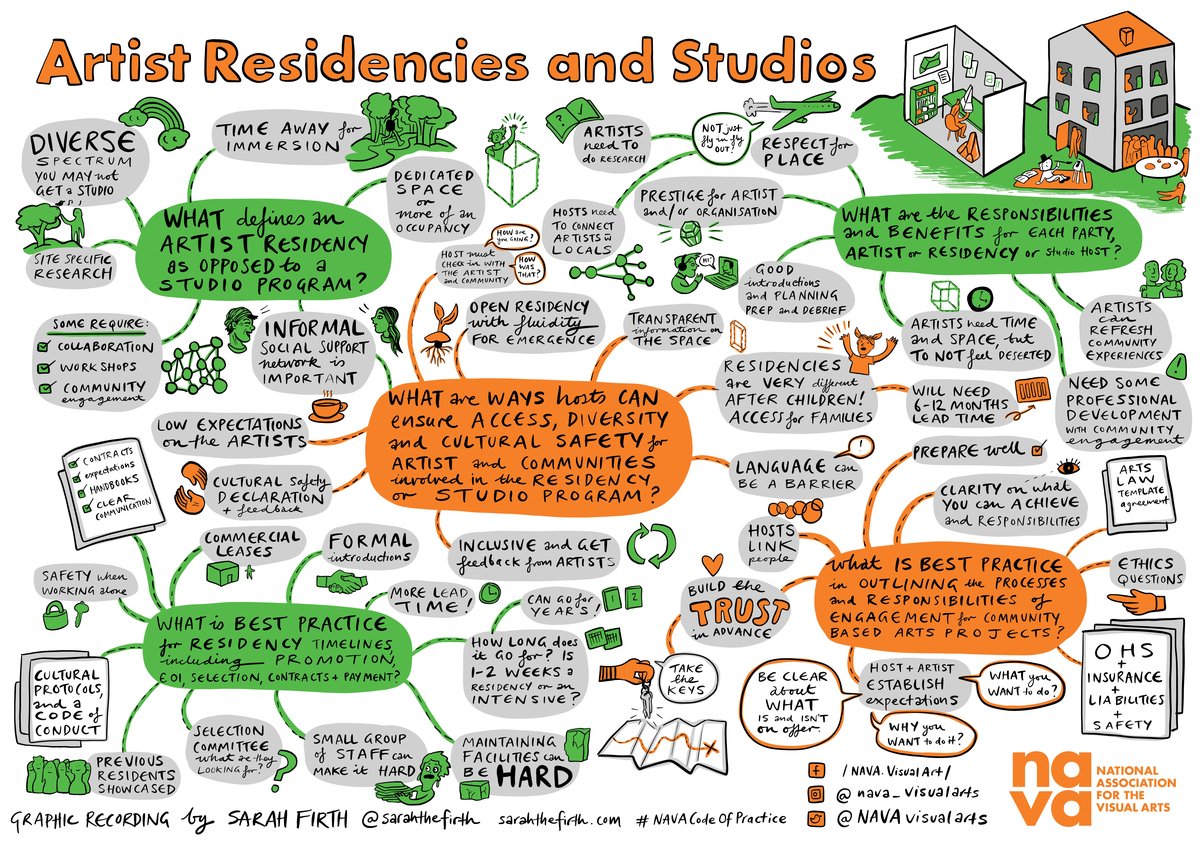
Artist Residencies and Studios. Graphic by © Sarah Firth.
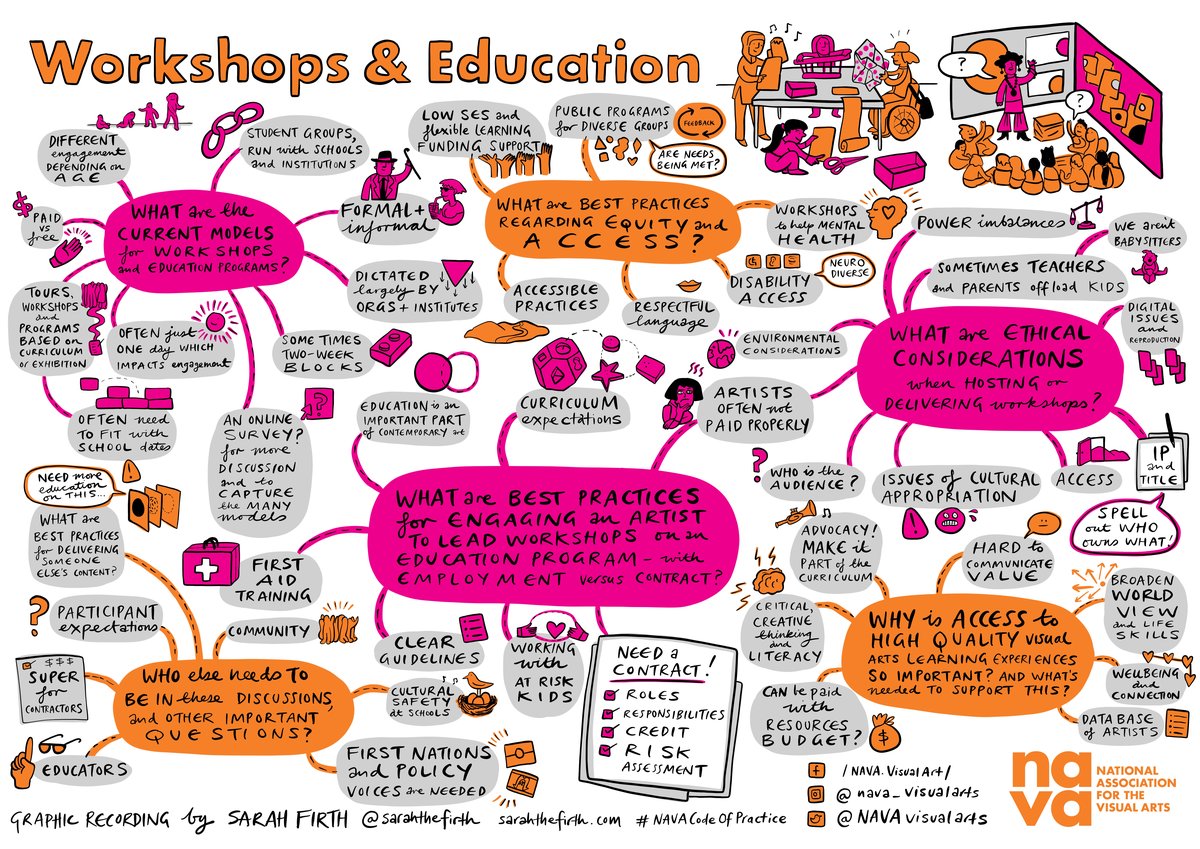
Workshops and Education. Graphic by © Sarah Firth.
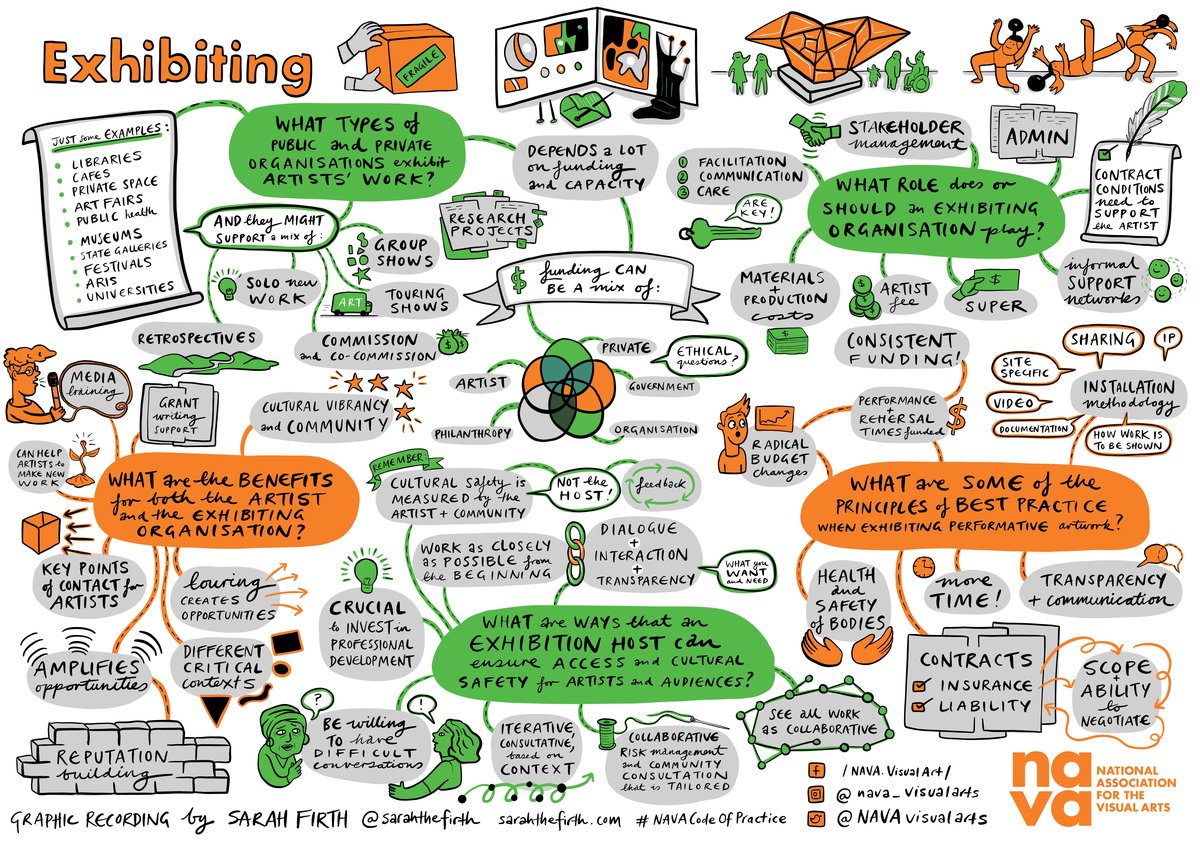
Exhibiting. Graphic by © Sarah Firth.
NAVA would like to warmly thank all contributors for their insights, which will be used to inform the development of key discussion papers for further research over the coming months. The sessions covered both familiar and new experiences, and we’re taking a close look at these to help focus our research areas in the coming months.
One of the overarching takeaways from these consultation sessions is that issues of accessibility, diversity, inclusion and cultural safety remain largely unaddressed by artists and organisations across the arts and cultural sector. Addressing these as a priority will be central to the Code of Practice – both in the process of revising it, and in the final form of the Code itself. Central to achieving best practice is the centering of First Nations artists, arts workers, communities and experts, and the ethical inclusion of our full diversity of voices.
Many stakeholders that may not consider themselves to be a part of the visual arts industry, such as young people, educators and council workers, were also missing from this early consultation stage. While our consultations were open to all, there is clearly a lot more to be done to ensure that NAVA is reaching everyone whose voice is vital to this work.
The consultation week also highlighted important concerns regarding responsibility and accountability of both the artist and organisation/host, particularly around community-based practice and agreements on the provision of spaces and services.
Aboriginal and Torres Strait Islander voices will be at the centre of the revision of the Code of Practice. NAVA recognises the need to centre First Nations perspectives, truths, priorities and knowledges. The first step of this process is the development of a First Nations working group.
If you identify as First Nations and are interested in being part of the working group or part of consultation in another way, please email our First Nations Engagement Coordinator, Georgia Mokak (Djugun) via georgia@visualarts.net.au to discuss further.
Over the next months we will continue to discuss these topics, encouraging more detailed conversations within focus groups, interviews and further research.
Focus areas such as payment standards will be considered in the next stages, so as to be informed by this work across all consultation topics.
As always, we encourage you to become involved in further consultation, provide feedback and raise any issues regarding best practice that the Code of Practice should address. Please email NAVA's Best Practice Coordinator Holly Morrison via hmorrison@visualarts.net.au.
INDUSTRY GROUP
The Industry Group oversees and validates the processes that NAVA is following to achieve the Code of Practice revision. This is a high-level forum for scrutinising the overall plan, as well as championing its value and advocating for its success. The group will also help NAVA to ensure that our work aligns with existing legislation, regulation, and cross-industry best practice where applicable. NAVA expects this group to be large, comprehensive and diverse.
You are invited to join NAVA’s Code of Practice Industry Group – or nominate a colleague. Please email Holly Morrison, NAVA's Best Practice and Finance Coordinator via hmorrison@visualarts.net.au with your name, contact details, area/s of expertise and a brief comment to support your nomination to the Code Industry Group.
The Code of Practice for the Professional Australian Visual Arts, Craft & Design Sector sets the national best practice standards for the sector, providing a set of practical and ethical guidelines for the conduct of business between art, craft and design practitioners and galleries, agents, dealers, retailers, buyers, sponsors and partners, commissioners, employers and the managers of residencies, workshops, competitions, prizes and awards, and more. For more details about its revision, see Revising the Code of Practice: A collaborative plan.